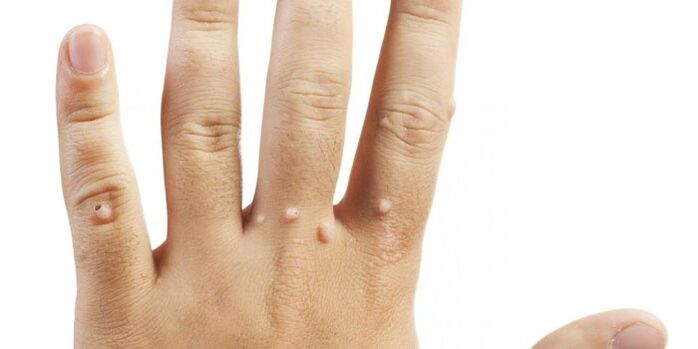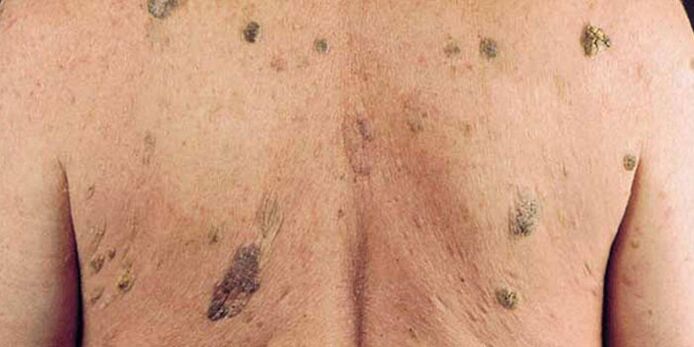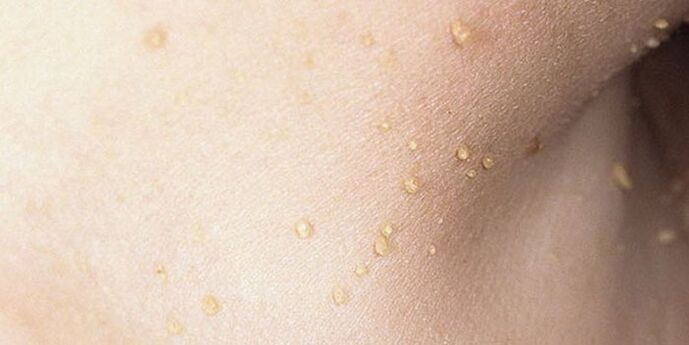If such a growth appears on a person’s skin, then he asks what kind of changes have taken place in the body, is it not dangerous? Read on for useful information about the characteristics of different types of papilloma. This information will help you identify the existence of such formations so that you can deal with them in a timely manner if necessary.
Types of papilloma
Why do these processes often appear on the skin with age? These skin changes are caused by human papillomavirus (HPV for short). After being infected with this pathogen, patients will develop papillomatosis, during which various forms of warts will appear on the skin or mucous membranes. These growths are benign, but certain types of papilloma have a high risk of regenerating into a malignant tumor. Therefore, if you find such changes in your skin, you must see a doctor!
Medically know more than 40 kinds of papillomavirus, they can cause various forms of diseases in humans. The type of virus that enters the body depends on the appearance of the papilloma, because the infection manifests itself through different types of structures on the outer skin of the body. According to the general classification, the following types of growth can be distinguished.
- Simple, also called vulgar-dark keratinized growth.
- Plantar-Affects the soles of the feet.
- Acrochords are linear structures with their bodies resting on their legs.
- Flat warts or common warts-often occur on the hands, fingers, and face areas of adolescents.
- Pointy-located on the mucous membrane of the mouth, genitals, or anus.
- Squamous cells-composed of squamous epithelium and stroma (the foundation of connective tissue and blood vessels) that grow due to the action of viruses.
- Basal cells-grow from cells or hair follicles in the basal layer of the epidermis.
- Internal-They do not appear in areas that are visible on the outside of the body, but in areas that are hard to notice, such as the throat or bladder.

tip
This growth is often called a wart. They are characterized by small size and special shape: wide base and sharp tip. These warts are flesh-colored or slightly pink, and appear individually or in groups. They are characterized by rapid growth: in just a few days, there is only one place to grow, forming a whole. In shape, this family resembles a cauliflower inflorescence. Genital warts are usually located on the mucous membranes: in the mouth, tongue, and near the genital area or anus.
Scaly
This form of skin growth caused by the HPV virus is the most common one because it can have a very wide localization throughout the body. What does this type of papilloma look like? These are round or oval flat structures that slightly protrude from the surface of the skin-no more than 1 mm. They are soft and show signs of keratosis. They usually appear in groups, and they are actually indistinguishable from the surrounding covering in color.
This growth mainly occurs in the upper body: face (such as nose or lips), neck. They often appear on the mucous membranes: in the mouth on the cheeks or tongue. Squamous cell tumors can be diagnosed in the esophagus, larynx, genitourinary system organs and even the rectum. It is recommended that people with this structure remove them because the risk of regressing to a malignant form is high.
Basal cell
These growths are often called basal tumors or senile warts because they often affect the skin of older people. These structures grow slowly from the basal layer of the epidermis (hence the name) or hair follicles and appear on the skin surface in the form of nipples, ranging from pink to dark brown. Common body parts for basal cell carcinoma are the armpits, back, lips and nose. Their distinguishing feature is that they will never degenerate into cancerous tumors, so they are considered safe.

What is a papilloma in the private part?
When it comes to the structure of the genital area, it means a sharp structure. This type of papilloma is an overgrowth of cells in the upper layer of the epithelium, which looks like a small papillary group. This growth usually affects both sexes as well. They are located on the surface of the groin and genitals: male-the glans of the penis or urethral cavity, female-the vaginal mucosa, the surface of the cervix and the uterus itself.
The appearance of changes in the skin of reproductive organs caused by human infection with HPV virus requires special attention from patients. He needs to consult a doctor and remove growths on his genitals, because as the disease turns into a chronic disease, the risk of infertility and tumors will increase greatly.
Photo: What kind of papilloma on the body looks like
In order to accurately and clearly imagine what these forms are, it is useful for you to look at these growing images. Check out this featured photo, which shows examples of different types of papilloma. By checking the growth of you or your loved ones through these photos, you can determine in advance whether these warts need to be removed forcibly and prevent serious risks to your health.
















































































